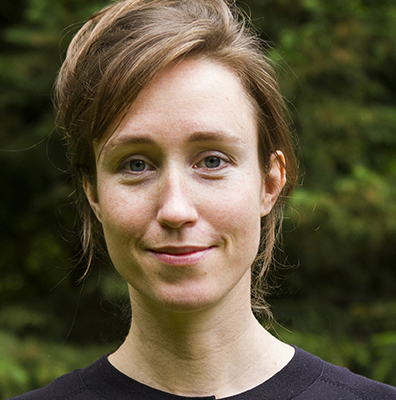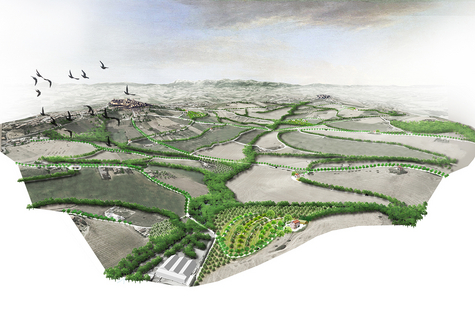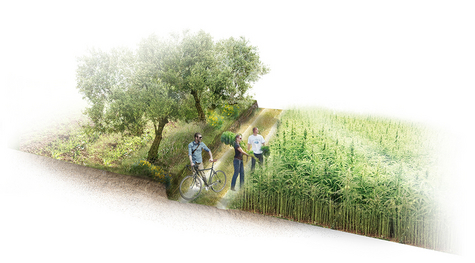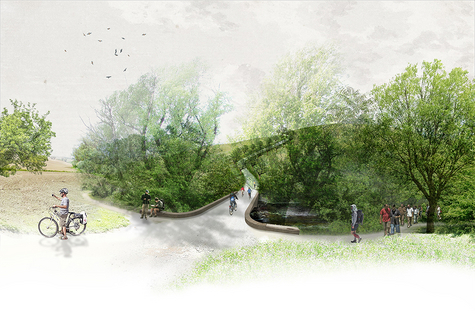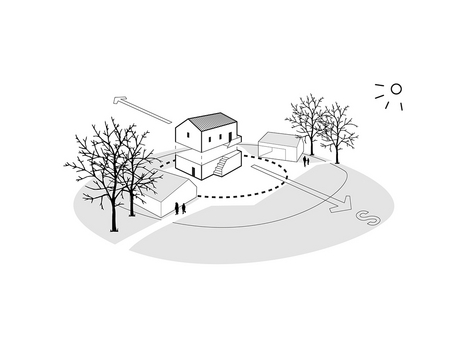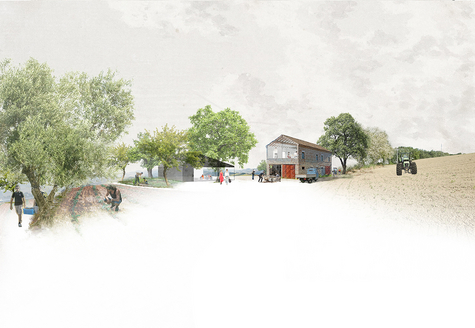Astrid Bennink
- Contact
- LinkedIn
Het kleine-economie landschap. De maakindustrie als motor voor landschappelijke ontwikkeling
Assignment
Many Southern European regions are in a deep crisis, both ecologically and economically. In those places where agriculture was the only means of existence, all hope seems to have vanished. People are moving to the city and are abandoning rural areas. The Italian coastal region Le Marche has unique origins with a small-scale, agricultural landscape that was cultivated intensively by the inhabitants. Fruit, olives, cereals and vegetables were grown together in strips. Traces of the old cultural landscape are still clearly visible, such as the structure of old country roads and historic farms on foothills.
With the disappearance of the age-old mezzadria sharecropping system, things have changed. Agricultural companies are growing substantially every year, while at the same time they are still doing a lot as in the past. The reality is becoming increasingly evident: empty houses and the grave consequences of erosion are clearly visible. There is a lack of cohesion between old and new. If the current trends continue and no clear future prospects for the landscape are created, the value of the region will decrease even further.
Opportunities
In Le Marche, the manufacturing industry is an important part of the local economy. There is global demand for distinctive (quality) products, such as hand-made shoes or musical instruments. This manufacturing industry consists of family companies of various sizes and has been traditionally intertwined with the agricultural industry. Individual family households formed closed economies, in which the family members made almost everything - from food to clothes to furniture - themselves. Tradition and craftsmanship emerged in the countryside.
The connection with the land has remained intact due to unchanged types of ownership. That means that a strikingly large amount of young people are engaged in (sustainable) agriculture, as opposed to their parents who - due to stories about poverty - were actually opposed to the farming life.
The project
In this graduation project, the active, local manufacturing industry is deployed to put the landscape into use (once again). In addition, I see the increasing interest in sustainable agriculture among the younger generation as the motor that will set those new developments in motion. Through directing the existing forces and processes, a vibrant and future-proof region can emerge within decades that also offers recreational prospects, and which will also see the return of the natural diversity. A region that can be seen as an example instead of lagging behind.
The small economy landscape is a development strategy that avoids the impending demise of the landscape and instead explores its opportunities. Not so much through the arrival of newcomers, but by telling the story behind the landscape. And by utilising the strengths of the people and the local economy.
Commission members: Karen de Groot (mentor), Harro de Jong, Silvia Lupini. Additional members for the exam: Mirjam Koevoet, Saline Verhoeven
